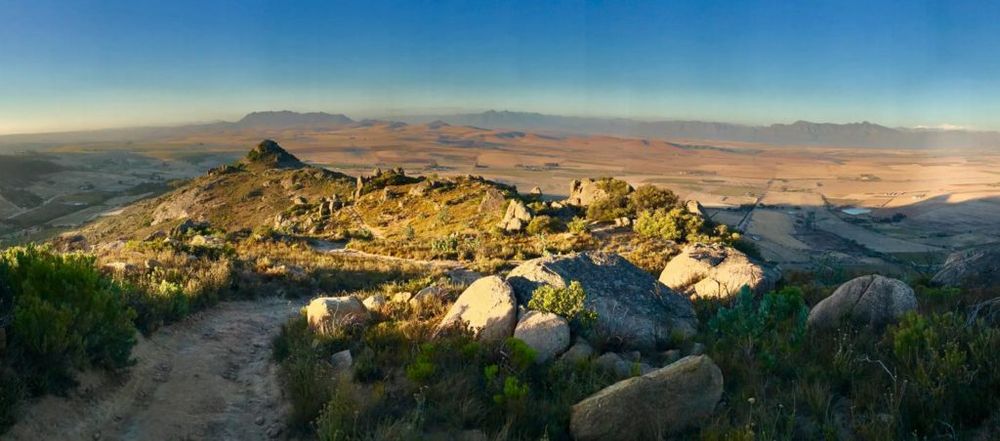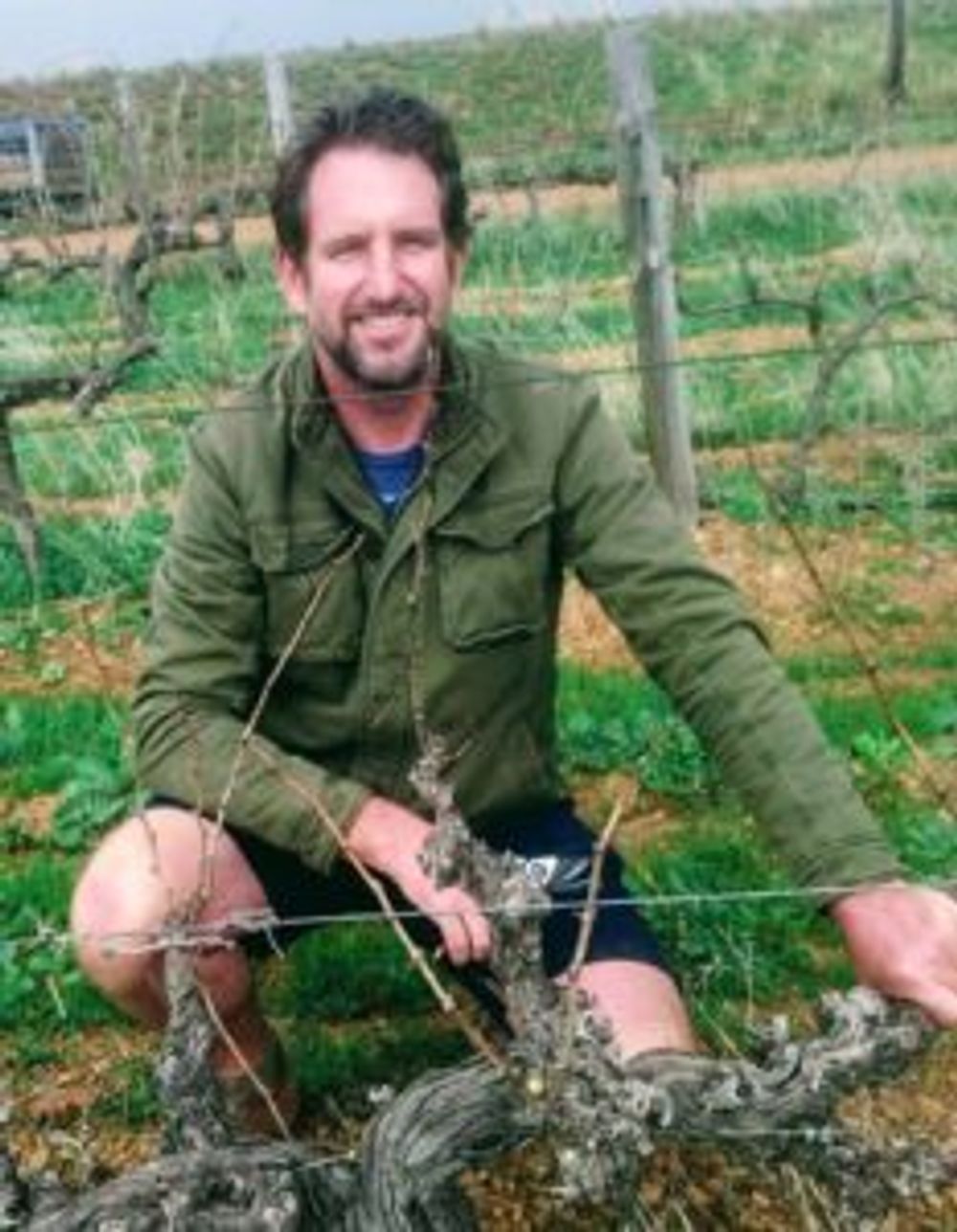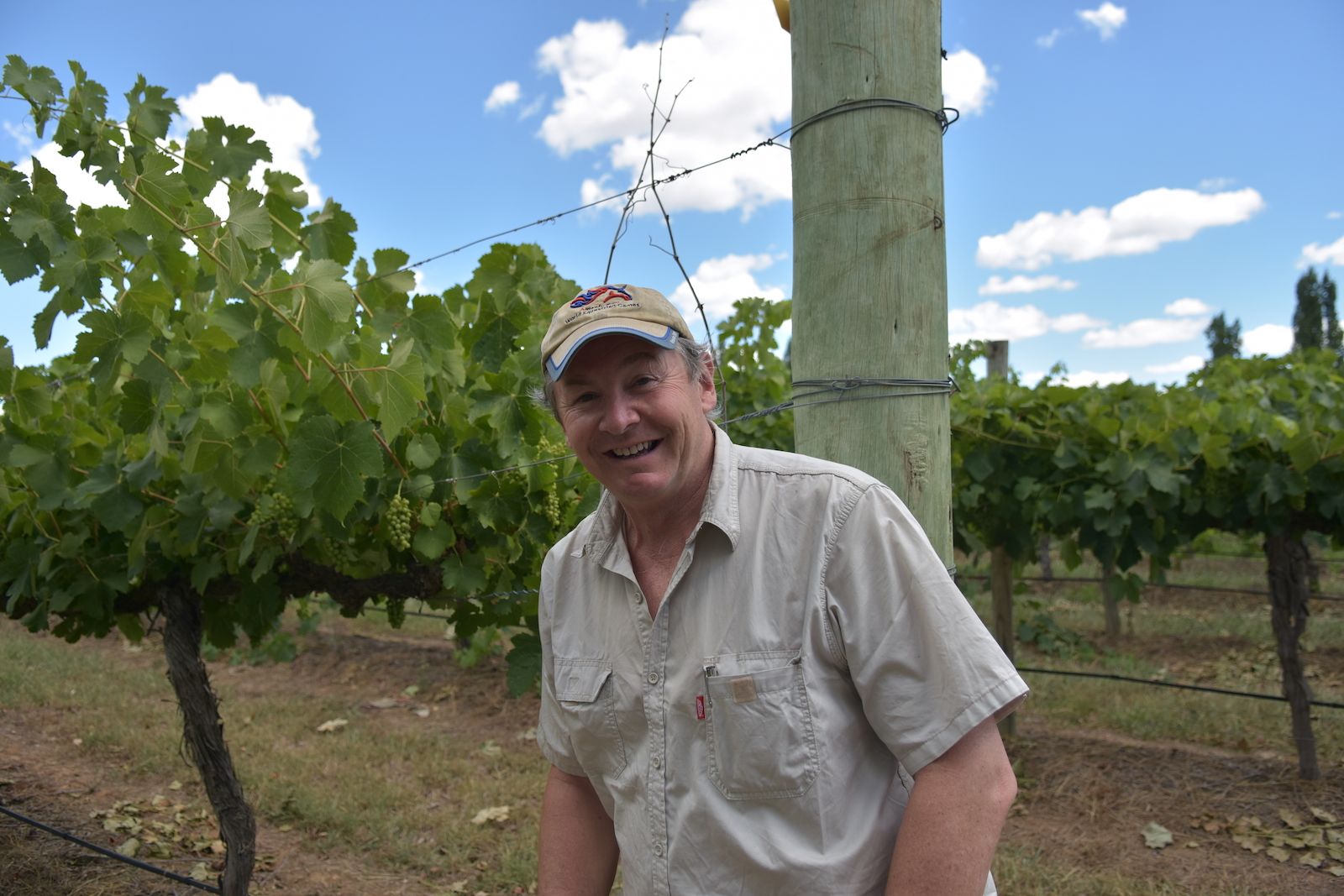“It is hard to put either of Catena’s two great Chardonnays – White Stones and White Bones – ahead of the other, for there is no difference in quality. It is simply a style consideration,” writes Geoffrey.
So many other wines deserve to be in a top 10 list, but here are those that caught the selector’s eye – in strictly alphabetical order.

Babylonstoren, Mourvèdre Rosé 2019 (Paarl, South Africa). I can imagine a few people asking what a Rosé is doing in a top 10, but this little beauty from the magnificent Babylonstoren estate half-way between Stellenbosch and Paarl is just so good. Pale salmon in colour, this bone-dry pink has refreshing acidity as well as real elegance. Its delicious raspberry notes, and tinge of creamy strawberry yoghurt, make it oh so drinkable.

Sebastian Beaumont
Beaumont Estate New Baby 2017 (Bot River, South Africa). Sebastian Beaumont, one of South Africa’s leading winemakers, first crafted this premium white blend from predominantly old vines in 2015, scribbling ‘New Baby’ on the barrel, and has wowed many with it. This vintage is 45% Chenin Blanc (from vines planted in 1974 & 1978), 26% Sauvignon Blanc (planted 1983), 15% Semillon, 8% Colombard & 6% Chardonnay. Fermented in 400-litre French barrels (30% new), this is a wine that is voluptuous yet delicate with the added dimension of some great phenolic tension. A pH of 3.35 helps give freshness and balance (12.8% abv).
Bracco Bosca, Gran Ombu Cabernet Franc 2017 (Atlantida, Uruguay). There is so much more to Uruguay than Tannat-based wines as I found on a trip there this year. This superb Cabernet Franc is a notable example of Uruguay’s huge potential, coming as it does from a small winery owned by the delightfully welcoming and enthusiastic Fabiana Bracco, a great ambassador for her country’s wines. Silky tannins and gorgeous red berry fruit are hallmarks of this Cab Franc, which comfortably absorbs 100% new but lightly toasted French oak. It has the structure to age but is difficult to resist now.
Catena Zapata, White Stones Chardonnay 2015 (Mendoza, Argentina). It is hard to put either of Catena’s two great Chardonnays – White Stones and White Bones – ahead of the other, for there is no difference in quality. It is simply a style consideration. The latter comes from underlying soil layered with limestone deposits that have the appearance of crumbled bones (hence the name). It could easily be mistaken for a top Puligny-Montrachet, while the White Stones vineyard produces rounder more Meursault-like Chardonnay. On a dry riverbed very close to the White Bones site, it has different soils that are more gravelly with white calcium carbonate stones. Laura Catena thinks the microbial richness of the parcel gives the wine a special flavour. Intensity of flavour is very marked as is its length. One of the New World’s greatest Chardonnays.
House of Arras, Grand Vintage 2008 (Tasmania, Australia). Made by the king of sparkling wines in Australia, Ed Carr, this blend of 65% Chardonnay and 35% Pinot Noir spent 7 years on the lees. Very long and with notable concentration, its bready, brioche notes help underpin its multi-layered complexity, but what really marks it out is its sea-spray oystery character. Mainland Australian sparkling wines don’t have it, and Carr puts it down to the maritime influence. 2008 was an especially good vintage in Tasmania owing to some late rain that growing season, which reset the vine balance.
Lagarde, Henry No 1 Gran Guarda 2016 (Mendoza, Argentina). Juan Roby, Lagarde’s winemaker for 20 years, has crafted an exceptional Malbec-dominated blend that is one of Argentina’s great red wines. Malbec accounts for 70% of it, with Cabernet Franc and Petit Verdot making up the balance. This is a very complex, multi-layered wine, with wonderful red and black fruit and firm but beautifully-integrated tannins. Its power and structure will give it a long life. Lagarde is one of several leading bodegas in Chacras de Coria, a leafy village half an hour’s drive south of central Mendoza.
Lynch-Bages 1949 (Pauillac, Bordeaux). Thanks must go to the Pfurtscheller family in Austria for a special vertical tasting of Lynch-Bages (1945 to 1995) at their Hotel Jagdhof near Innsbruck. It is impossibly difficult to pick out one of so many venerable wines from that memorable evening but I have gone for my favourite of three great vintages in the 1940s (the other two being 1945 and 1947). What marked 1949 out was the brightness of its fruit, which had barely begun to fade. A glorious wine with talcum powder-like tannins, it had everything: vivacity, freshness, complexity, concentration and pronounced length.

Michael Baum and Emmanuel Sala (l-r)
Château de Pommard, Clos Marey-Monge Monopole 2017 (Burgundy). Mention the name Salah in England, and 99% of respondents will think of Liverpool’s champion goalscorer. In France, amongst wine professionals at least, Emmanuel Sala is the highly respected cellar master at Chateau de Pommard, which has seen massive investment from new American owner, Michael Baum. The pair have combined to produce a seductive wine from Clos Marey‑Monge, which is a composition of seven different terroirs of limestone, iron-rich clay, alluvium and other minerals that combine to produce classic Pinot Noir. Firm but beautifully integrated tannins, real intensity of flavour and a very long finish are hallmarks of this top Burgundy.
Springfield Estate, Methode Ancienne Cabernet Sauvignon 2013 (Robertson, South Africa). Jeanette Bruwer, whose family have been making wine on the estate since 1930, tells a good story of how ‘miracle’ Cabernet fruit eventually grew in the remote site from which this terrific wine is produced. In 1984, her family cleared a seven-acre plot of land always considered not “good” enough for viticulture. “Rocky and steep, and infested with thorns, it was our thirst for Cabernet Sauvignon that drove us to this forsaken place,” she said. “Our vines did grow, although they struggled at first as there was virtually no soil, and roots had to creep past rocks. The vines took much longer to bear than others, but eventually did. The miracle was in the fruit – tiny berries that were intense in colour and flavour.” The result is a fabulous Cabernet with elegance, high quality tannins and delightfully concentrated fruit. Seeing 100% new French oak, it has the structure to age for 15 years or more.
Viña Vik 2013 (Cachapoal Valley, Chile). This top-class Bordeaux blend (67% Cabernet Sauvignon, 17% Cabernet Franc, 14% Carmenere, 2% Merlot) underlines just how good Chile can be. Founded by the wealthy Norwegian Vik family, this estate was planted up in 2006-7 in the Cachapoal Valley to a density of 8,100 plants per hectare (60% higher than Chile’s average), benefiting from a cooling afternoon sea breeze that blows in from 40 miles away. This is crucial for the freshness of the Cabernet Sauvignon, which effortlessly absorbs 100% new French oak. Cristian Vallejo, with Vik since the very start, is a winemaker to watch, crafting as he does eye-catching wines of poise, structure and balance like this one. This flagship label of Vik’s, first released with the 2011 vintage, took 10 years of research to develop, including more than 4,000 deep-soil studies to find the right terroir. Velvety tannins and pronounced freshness with linear acidity combine with glorious fruit to produce a complex yet elegant and structured wine with a long ageing potential.
































